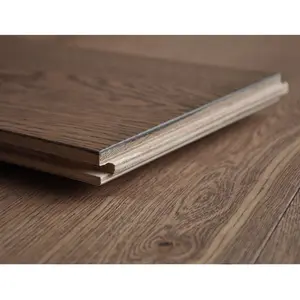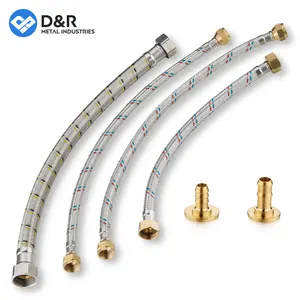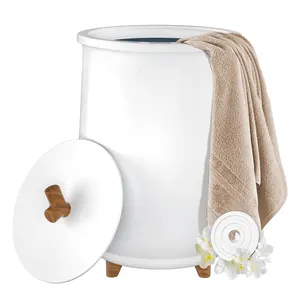Popular in your industry













































































































































































Top categories
About textured ceramic
Introduction
As we continuously seek to infuse our living spaces with character and charm, the rising trend of textured ceramics in home decor offers a unique opportunity to do just that. This article delves into the emergence of textured ceramics, their historical influences, and the different types available. It explores the aesthetic and functional benefits of these ceramics, and how they can be incorporated into various spaces in your home. From handmade to machine-made, glazed to unglazed, the world of textured ceramics is as diverse as it is fascinating. Read on to discover how you can revamp your space with this rising trend.
The Emergence of Textured Ceramics in Home Decor
Ceramics have historically been among the most popular raw materials for construction, characterizing interior design projects of both public and private spaces alike. The district of Sassuolo has provided an important contribution to the development of artisanal workmanship and production technologies that have molded the material, exploring its versatility and showcasing its various facets. The textured ceramic line available on Alibaba.com embraces the recovery of materials, workmanship, and graphics of the past under a contemporary key, creating a continuous link between memory and innovation.
Why Choose Textured Ceramics?
Textured ceramics, particularly textured piezoceramics, offer unique properties akin to single crystals. These ceramics enable transducer designs to operate at high stress and field limits in a compact form factor. They are ideal for unconventional applications such as low frequency/high power projectors, hydrophones, and sensors. Their performance and operational bandwidth significantly exceed those of conventional PZT ceramics, making them a superior choice.
Historical Influence on the Trend
The trend of textured ceramics has historical roots. Influences can be traced back to the work of renowned potters in Japan. These artisans developed a unique texturing technique, which involved rolling a small rope over the soft surface of a finished piece, creating a distinct pattern. This technique, along with others, has greatly influenced the evolution of textured ceramics, contributing to the diversity and richness of this art form in contemporary home decor.
Exploring Different Types of Textured Ceramics
Textured ceramics have evolved through various techniques and influences. One such influence is the aforementioned Japanese style. This technique involves creating impressions on the soft surface of a finished piece, which are then filled with a white slip. After drying, the surface is scraped to reveal the underlying pattern. Another technique involves texturing a cylinder and shaping the piece from the inside only, resulting in a pattern that reflects nature's adaptation to form. The process of carving surfaces also offers a unique expression of texturing. These variations in handmade textures give each piece a unique energy and character.
Glazed vs Unglazed Ceramics
Glazed ceramics have a smooth, glossy surface created by adding a liquid glass to the clay body, offering a shiny, clean aesthetic. They are often used for flooring and outdoor areas due to their non-porous and slip-resistant surfaces. On the other hand, unglazed ceramics aren't glazed, presenting a raw, earthy look. They are ideal for commercial use as they can hide blemishes and chips better than glazed ceramics. The choice between glazed and unglazed ceramics often comes down to personal preferences, aesthetic requirements, and the specific application.
Handmade vs Machine-made Ceramics
The value of buying handmade ceramics over mass-produced ones is appreciated by those who cherish the creative spirit and support artisans and craftsmen. Handmade textured ceramics offer quality over quantity, embodying the dedication and skill of the artisan. This commitment to craftsmanship ensures each piece is unique, adding a personal touch to your home decor.
Incorporating Textured Ceramics into Your Space
Incorporating textured ceramics into your space can be a fun and creative process. One way to do this is by giving old ceramic vases a new life with a textured paint finish. This DIY project involves mixing acrylic paint with baking soda to create a textured paint. The texture can be adjusted by varying the amount of baking soda used. This technique can be applied to any ceramic item, allowing you to customize your decor to fit your style. The final result is a rustic pottery texture that adds a unique touch to any space.
Textured Ceramics in Living Spaces
The Modern Farmhouse Textured Ceramic Vase Set available on Alibaba.com is a perfect example of incorporating textured ceramics into living spaces. These handmade ceramic vases, made using a special high-temperature firing method, feature a geometric textures design that is clean, simple, and elegant. The vases are unglazed, highlighting the natural lines created during the crafting process. The set includes three vases of varying sizes, making them versatile for different arrangements. They are suitable for flower arrangements and hydroponic plants, and their scratch-proof cushion at the bottom ensures stability and protection for your tables.
Textured Ceramics in Kitchens and Bathrooms
Incorporating textured ceramics into your kitchen design can add a unique touch. Dimensional ceramic tiles, for instance, add texture rather than color, making them a versatile choice for various design aesthetics. They can be used as a backsplash, creating a focal point in your kitchen. The options are nearly limitless, allowing you to create a space that is uniquely you. However, remember to consult experts to ensure the materials function best for your needs. Textured ceramics not only enhance the visual appeal but also add a tactile element to your kitchen.
Maintaining Your Textured Ceramics
Maintaining textured ceramics requires routine care. Regular dust mopping, sweeping, or vacuuming is recommended before cleaning with liquid products. Glazed ceramic tiles should not be sealed, but grout should be. For unglazed tiles, use concentrated tile cleaners with a neutral pH. If you need to remove a sealer from a ceramic tile, use a tile sealer and adhesive remover. Grout, the material filling the spaces between tiles, should be sealed regularly to preserve and protect it. Sealing the grout or using an epoxy grout doesn't guarantee against surface buildup or discoloration, hence periodic cleaning is necessary.
Cleaning and Maintenance Tips
Maintaining textured ceramic tiles requires a specific approach. One of the most effective methods is steam cleaning, which uses hot steam to extract dirt from the floor onto a microfiber pad, disinfecting simultaneously. This method doesn't require chemicals and is safe for various floor types, including textured tiles. For deeper cleaning, a natural abrasive like baking soda can be used. Mixing baking soda with water to form a paste, applying it to the tiles, and then spraying a vinegar solution can help remove stubborn dirt and stains.
Repairing and Replacing Textured Ceramics
Repairing textured ceramics involves careful cleaning of the broken pieces, followed by the application of a clear, two-part epoxy adhesive. It's crucial to adjust the pieces precisely before the glue sets. For porous materials like terra cotta, heating the surface prior to the epoxy application improves bonding. If a piece is missing, fillers like a common epoxy available on Alibaba.com can be used. After the repair, the ceramic piece can be sanded and painted to hide the repair lines. The process requires patience and precision, but it can restore the beauty and functionality of your textured ceramics.
Conclusion
Textured ceramics have proven to be more than just a passing trend in home decor. Their rich history, versatility, and unique aesthetic appeal make them a valuable addition to any space. Whether you're drawn to the rustic charm of handmade ceramics or the sleek finish of machine-made ones, there's a textured ceramic piece that's perfect for you. Incorporating them into your home is not only a nod to the artistry and craftsmanship of the past, but also a step towards creating a space that's uniquely yours. With proper care and maintenance, these pieces can serve as timeless elements in your decor, enhancing the beauty and character of your home for years to come.






































































